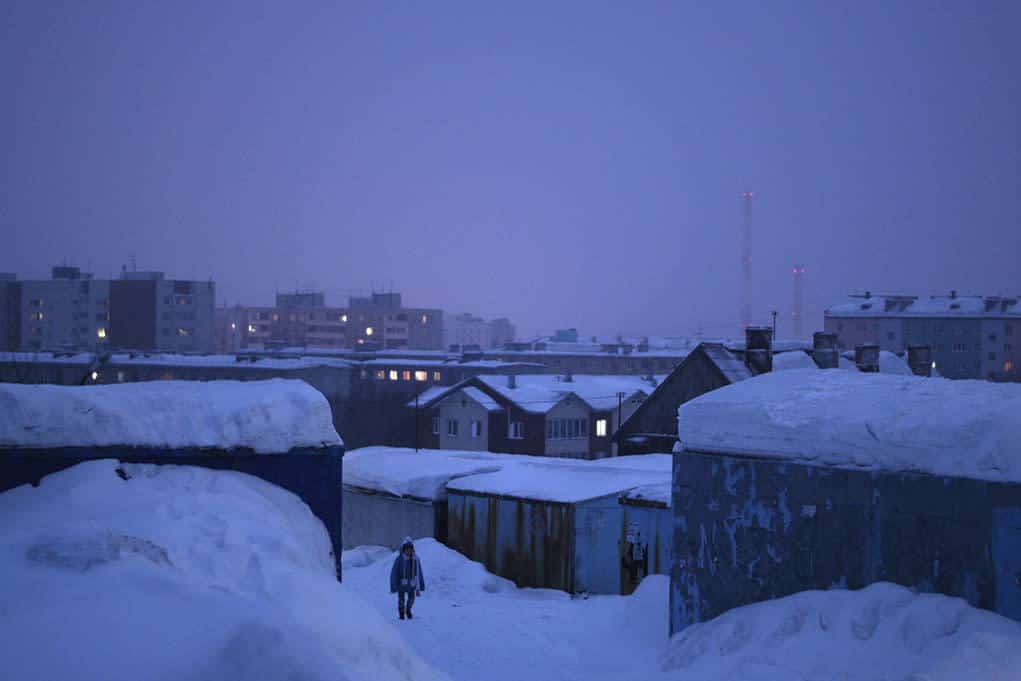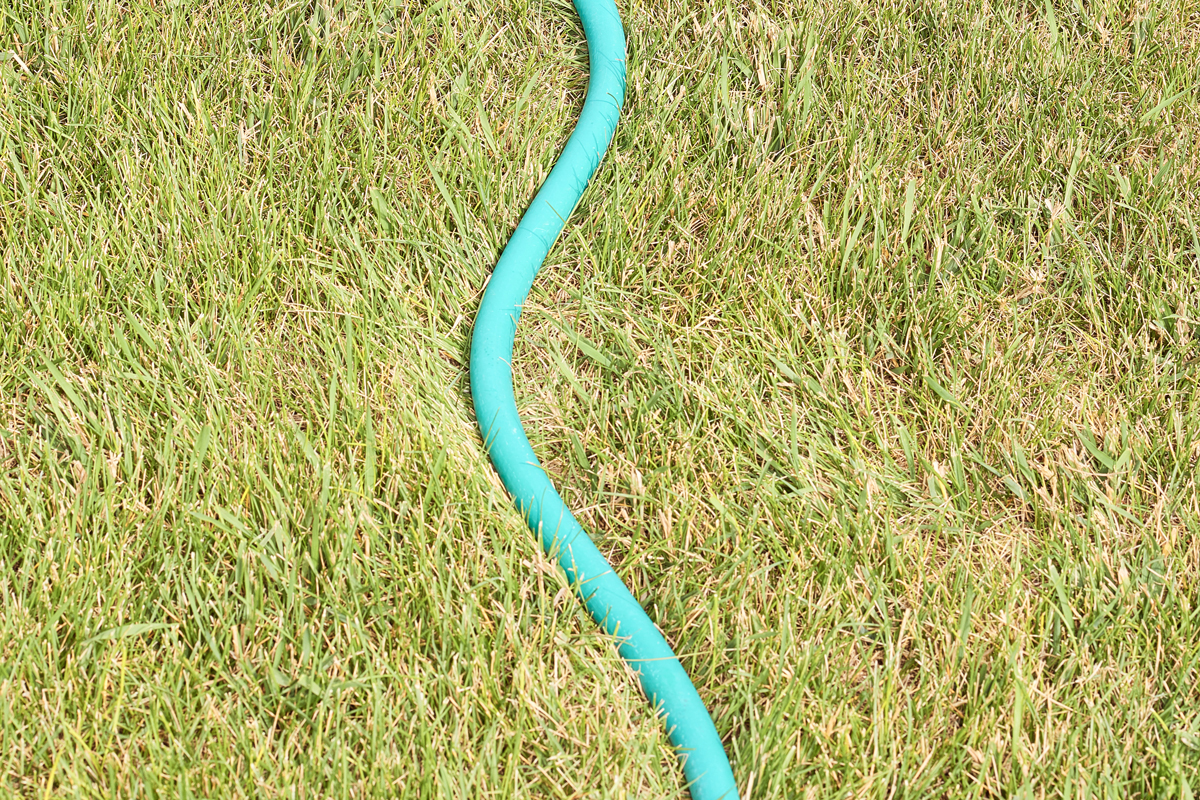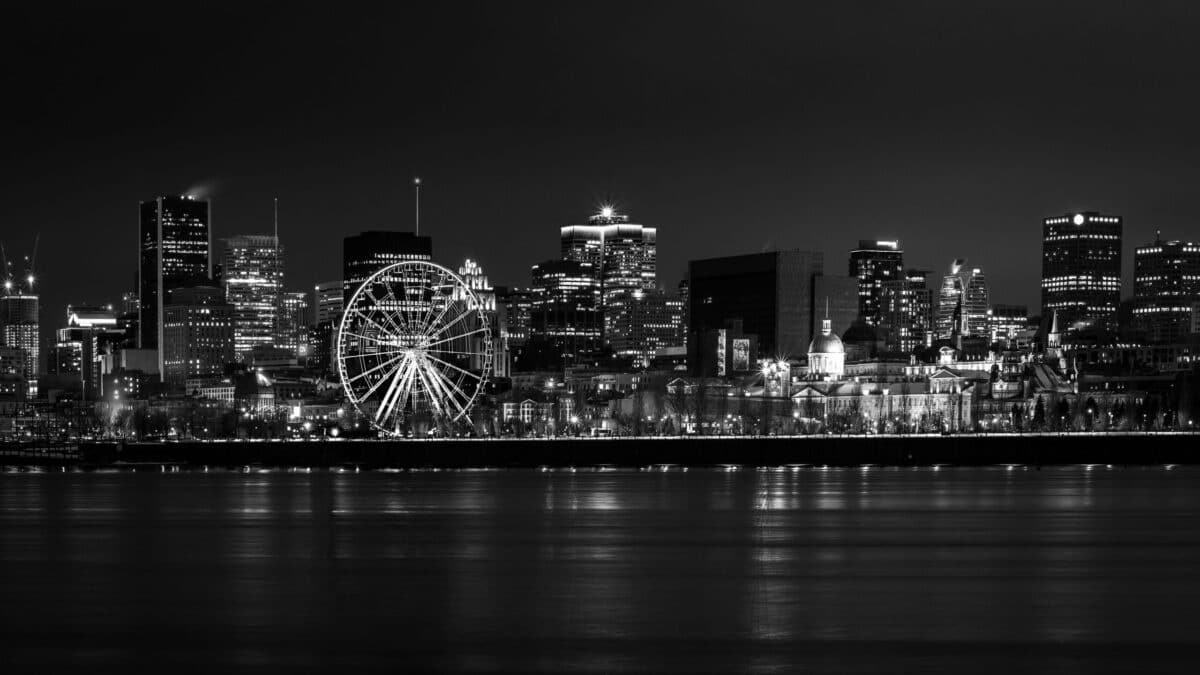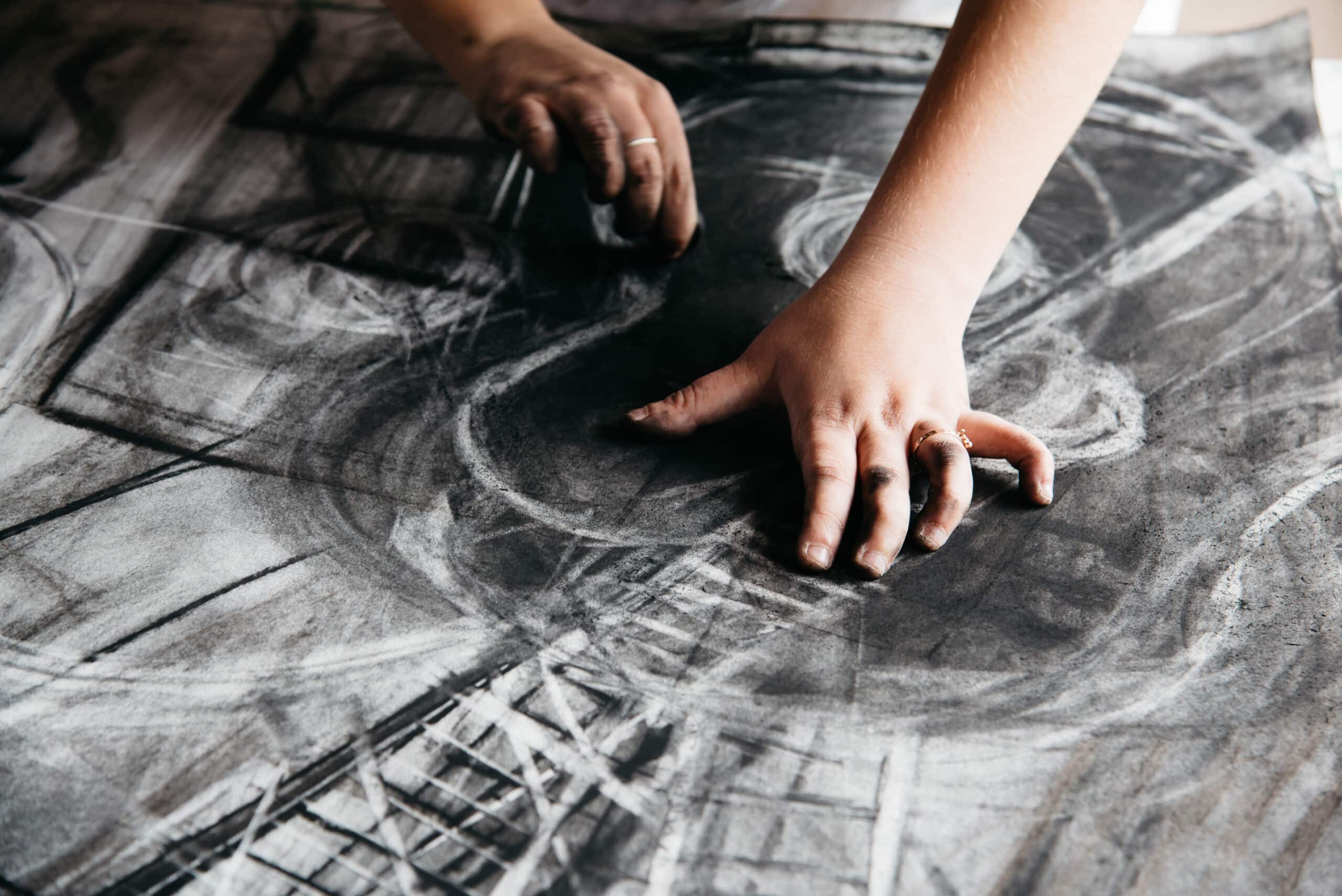A veces, cuando las temperaturas caen muy por debajo de cero en Múrmansk, las aguas alimentadas por la Corriente del Golfo del Cabo Norte empiezan a evaporarse. El puerto se convierte en una sauna brumosa, rodeada de frío siberiano a lo largo de cientos de kilómetros. El artista alemán Marcel Weber, también conocido como MFO, fue testigo directo de ello cuando viajó a la aislada ciudad en 2017. En colaboración con la música Liz Harris, Weber estuvo allí para crear una contemplación audiovisual específica para el lugar sobre la vida en Múrmansk.
El resultado, Después de su propia muerte, es una película experimental que toma su título de un ensayo de Mike Kelley sobre el arte después de la muerte del arte. Weber fue enviado al norte por encargo de la Dislocación no sólida que es una iniciativa conjunta del Instituto Goethe y el festival de música y arte de vanguardia Unsound. El proyecto Dislocation ha recorrido 11 ciudades de la antigua URSS y Asia Central. Después de su propia muerte fue una colaboración entre Unsound, el Instituto Goethe y el Barbican Centre de Londres.
"Aparte de producir mini festivales en cada lugar, intenté encargar una obra vinculada a cada lugar de alguna manera", cuenta el comisario Mat Schulz a Format Magazine por correo electrónico. A veces eso significaba iniciar una colaboración entre artistas locales e internacionales. "O significaba traer a artistas para que crearan una obra que fuera una respuesta al lugar". Así fue como Weber y Harris acabaron en Rusia.
"Cuando estuve en Múrmansk en mi primera visita, escuchaba mucha música de Grouper", dice Schulz. "Parecía encajar con el lugar a finales de noviembre". También hizo fotos, que luego publicó en Instagram. Tras darse cuenta de que a Harris, que hace música bajo los nombres de Grouper y Nivhek, le gustaban sus fotos, empezó a enviarle correos electrónicos sobre la ciudad. Fue a través de esas conversaciones como surgió la idea de encargar una obra audiovisual en Múrmansk. "Le pregunté si le gustaría participar, y me contestó que siempre le habían fascinado Rusia, el extremo norte, la arquitectura abandonada, y que estaba interesada", dice Schulz.
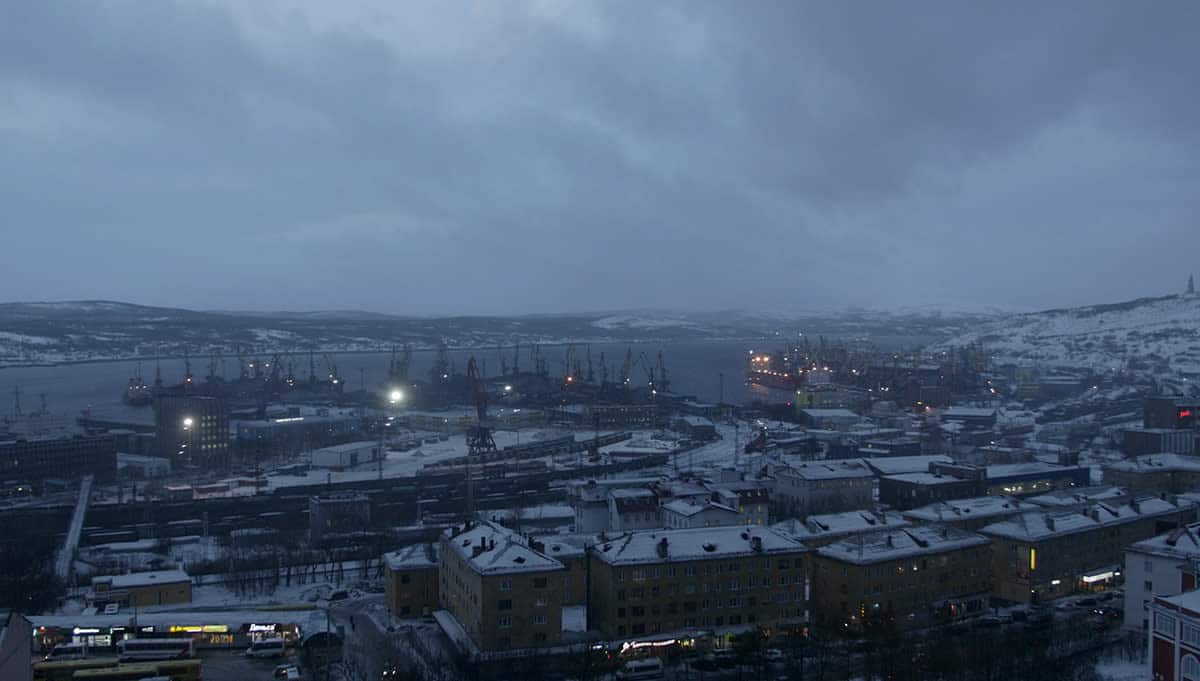
Vista aérea de Murmansk.
En cuanto a Weber, lleva más de una década colaborando con Schulz y el equipo de Unsound Krakow. Ha compuesto y dirigido películas, ha diseñado la iluminación y la escenografía de festivales, y también ha orquestado gráficos de espectáculos visuales en directo. Schulz pensó que Weber sería capaz de captar la esencia visual de la ciudad. "Fue el lugar que inspiró la idea de que estos artistas colaboraran, una idea que no existía hasta que fuimos allí", dice Schulz.
Como parte del proyecto Unsound Dislocation, Schulz visitó Murmansk en noviembre de 2015. La remota ciudad está situada cerca de la frontera noruega, en los confines del noreste de Rusia. Se encuentra al borde del mar de Barents, a más de 200 kilómetros al norte del Círculo Polar Ártico. "Hacía tanto frío y era tan duro", dice Schulz. "No podía imaginar cómo alguien podía vivir allí". Pero tras conocer a unos jóvenes comisarios de arte empeñados en explorar periferias urbanas remotas, Schulz cambió de perspectiva. "Hablaron de Murmansk y de su arquitectura abandonada, y me hicieron verla como algo especial y único, y no como un lugar lejano", dice Schulz. Integrar su nueva visión de Murmansk en el proyecto Dislocation resultó una evolución natural.
Tras visitar individualmente el lugar, y compartir sus ideas por correo electrónico y Skype, Weber y Harris fueron juntos a Murmansk para comenzar su trabajo. A pesar de las barreras lingüísticas y el aislamiento cultural, Weber afirma que los habitantes de Múrmansk se mostraron amables, incluso ante su cámara. Calcula que alrededor del 80% de las personas a las que se acercó accedieron a ser filmadas. "Es algo extraordinario", afirma. "Normalmente la gente no quiere ser filmada". Armado con un texto pretraducido en su teléfono móvil, Weber se comunicó lo mejor que pudo y filmó casi todo lo que vio.
Sin un objetivo claro en mente, Weber empezó a pasear casualmente por la ciudad filmando sus experiencias. Influido por las películas realizadas en las décadas de 1970 y 1980 por cineastas franceses como Chris Marker, Weber intentó crear una experiencia claramente murmanskí inspirada en su propia percepción. "[Las películas de Marker] eran más bien observaciones fluidas de lugares, pero al mismo tiempo con cierta humanidad y calidez", dice Weber. "Me impresionó ese estilo y sin duda influyó en cómo rodé [la obra]". A diferencia de las películas de Marker, la película de Weber se creó más para el mundo más allá de Murmansk que para los propios habitantes de la ciudad, con la esperanza de compartir una impresión de un lugar único que no es tan extraño como los espectadores podrían suponer.
El lento enfoque cinematográfico de Weber se basa en las impactantes experiencias que tuvo con las personas y los entornos que le rodeaban mientras rodaba en el Círculo Polar Ártico. Una de esas experiencias fue su viaje a Teriberka, un pueblo pesquero semiabandonado situado a seis horas al noroeste de Murmansk, al borde del mar de Barents. Cuando el guía turístico original de Weber, que conducía un jeep, canceló por segunda vez, contrató en su lugar a Evgeni, natural de Murmansk. Evgeni, un taxista local, le llevó hasta allí en su Toyota de dos ruedas motrices.
Aunque las carreteras que rodean inmediatamente Murmansk están establecidas y son seguras, se convierten rápidamente en caminos accidentados antes de degradarse en una capa de hielo comprimido a medida que Murmansk desaparece en la distancia. Conducir más allá de los límites de la ciudad puede volverse peligroso rápidamente.
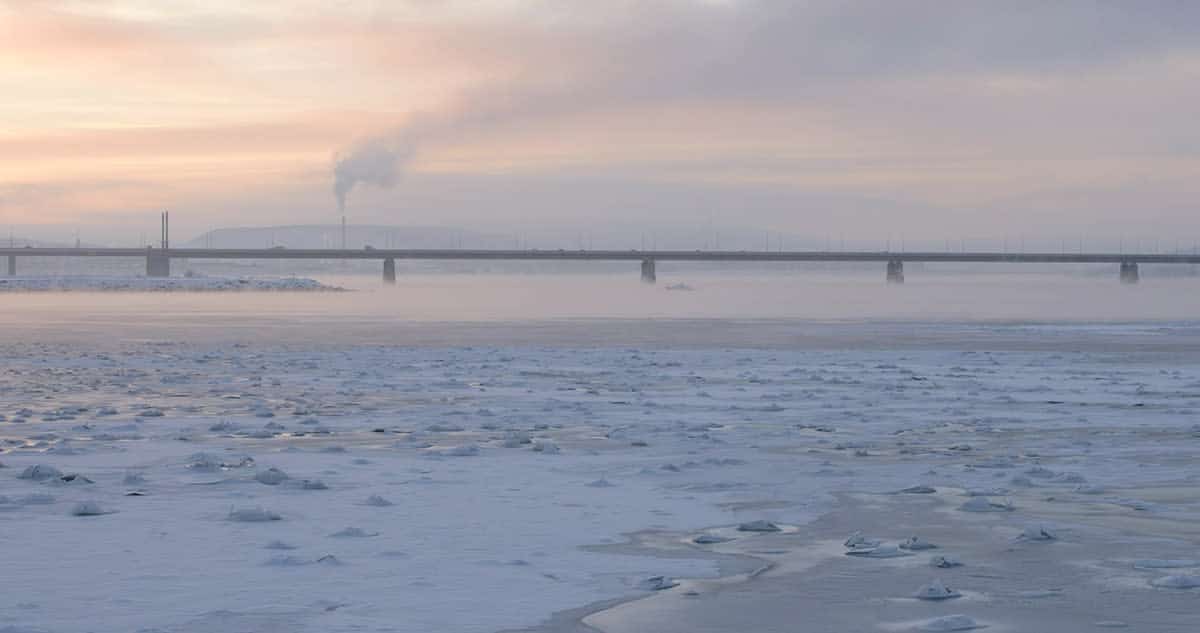
Imagen vía Oleg Khadartsev y Aleksandr Alekseev.
Unos postes naranjas flanqueaban su camino, mientras los dos luchaban por mantener la visibilidad en medio de la ventisca. "[Evgeni] estaba bastante confiado y comprometido con la tarea, a pesar de que había ráfagas de viento que soplaban enormes trozos de nieve y hielo sobre la carretera", dice Weber. "Pero tengo que admitir que había momentos en los que se inclinaba sobre el volante, con los ojos entrecerrados, y sentí que para él también debía estar al límite". A pesar de las grietas en la fachada de Evgeni, los dos acabaron llegando a Teriberka.
Durante el viaje sólo se cruzaron con un establecimiento. "Nuestro idioma compartido era tal vez de diez palabras, cuatro palabras rusas que yo sabía y seis palabras inglesas que él sabía", dice Weber. "Aun así, nos entretuvimos mutuamente durante doce horas y no fue aburrido. Incluso nos abrazamos al final del viaje".
Cuando llegaron a Teriberka para rodar algunas escenas de la película, descubrieron una escuela abandonada y una biblioteca decrépita, con libros esparcidos por el suelo. Aunque eran conscientes de la inestabilidad del pueblo, estaba más desolado de lo que esperaban. A Evgeni se le rompió el corazón. Esta escena no llegó al montaje final, pero su recuerdo perdura en toda la película.
Después de su propia muerte refleja la experiencia personal de Weber en Murmansk. Pero cuando Schulz relata sus visitas, pinta un cuadro similar. "Murmansk es un lugar único", afirma. "[Es] duro pero mágico, un mundo que muy poca gente conoce, incluso los rusos que viven en otros lugares". Mientras la voz tranquilizadora de Harris se filtra a través de su música ambiental, el diario visual de Weber recoge estos temas contrastados. La película facilita una experiencia onírica, de algún modo auténtica y exagerada al mismo tiempo.
A pesar del encanto invernal de la ciudad, bañada por el difuso tono anaranjado de las luces de las calles, no hay que desdeñar el clima polar y el terreno de Múrmansk. Weber duda que sea un lugar en el que fijaría su residencia permanente. Sin embargo, tampoco le gustaría estar trabajando en clubes y salas de conciertos todo el tiempo. "Supongo que la mezcla es lo que lo hace interesante".
Después de su propia muerte mostró recientemente en Cracovia y Londresy Weber espera que su agenda artística continúe del mismo modo que le llevó a Murmansk. Hasta ahora, el nuevo año ha empezado de forma muy parecida para Weber. Junto con otros colaboradores de toda la vida, Emptyset y Roly Porter, actuó recientemente en el festival de París La Gaîté Lyrique en el marco de la Bienal Némo.
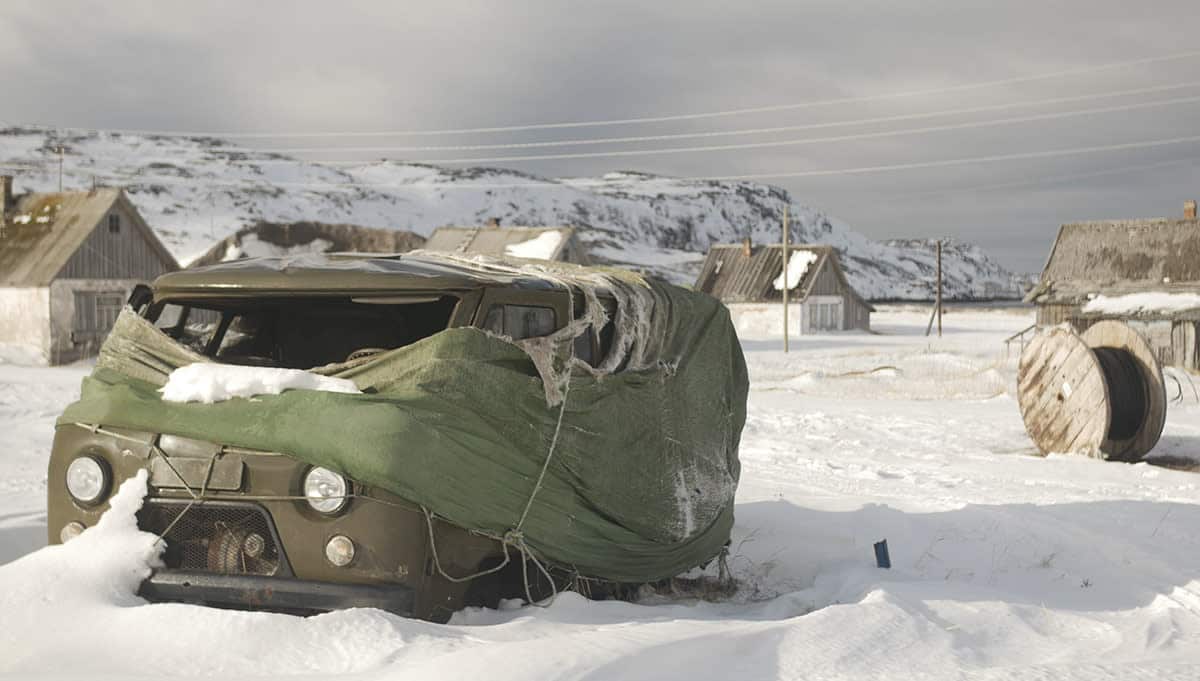
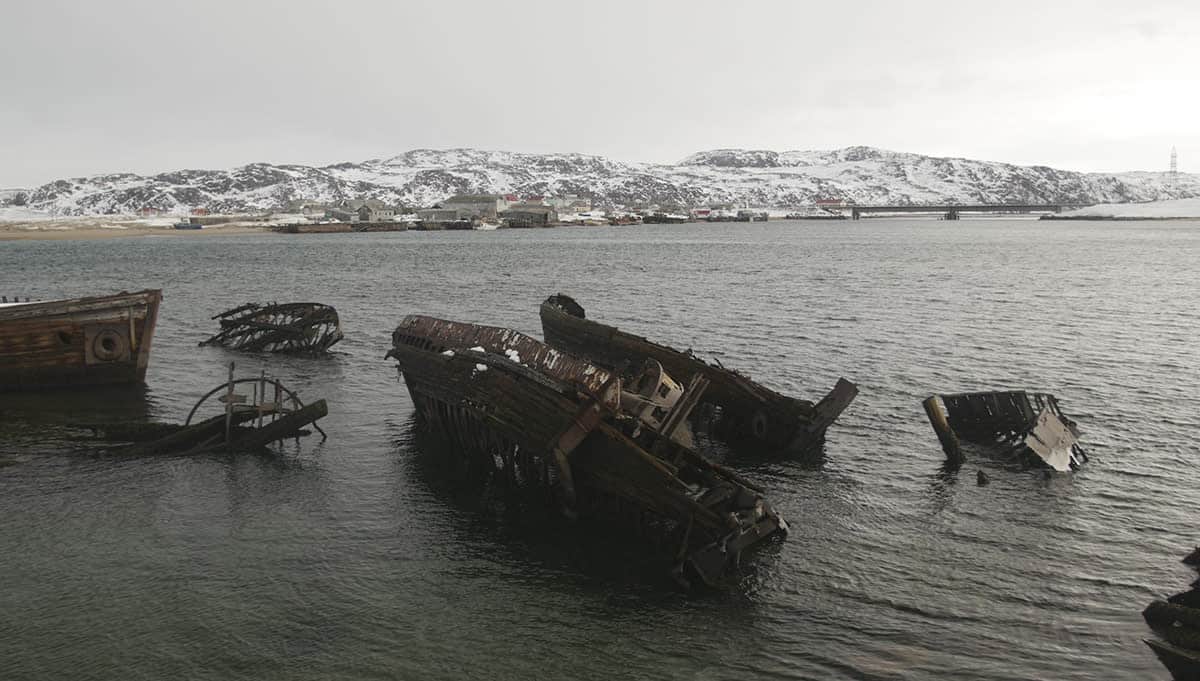
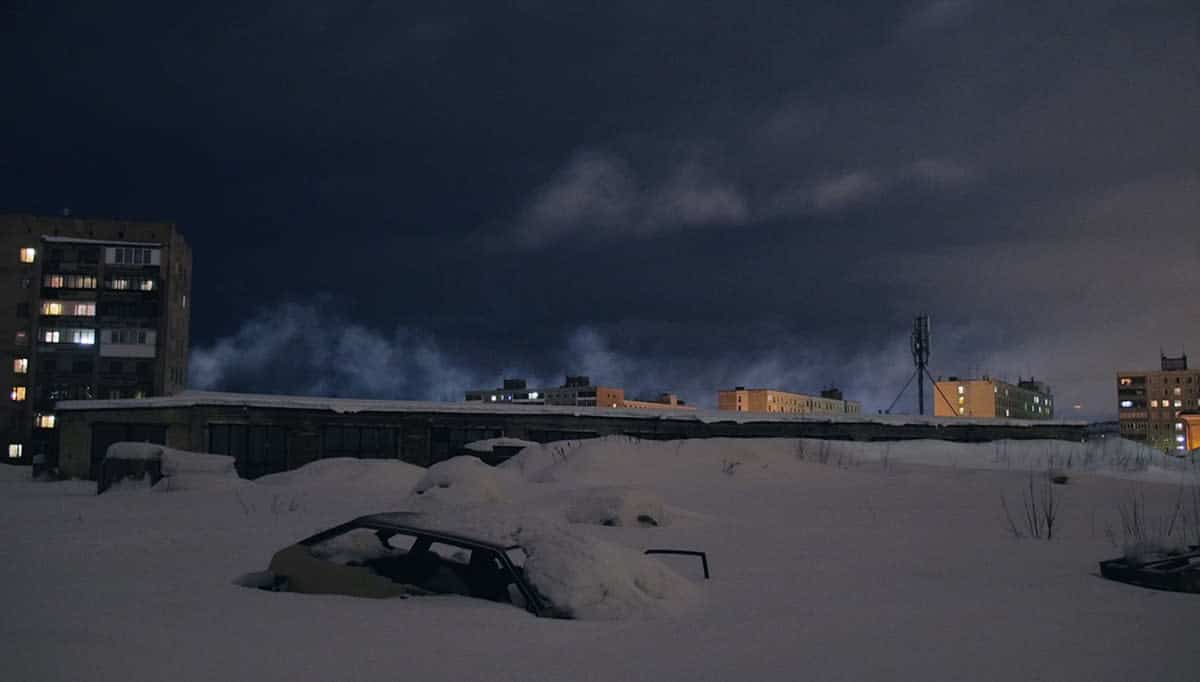
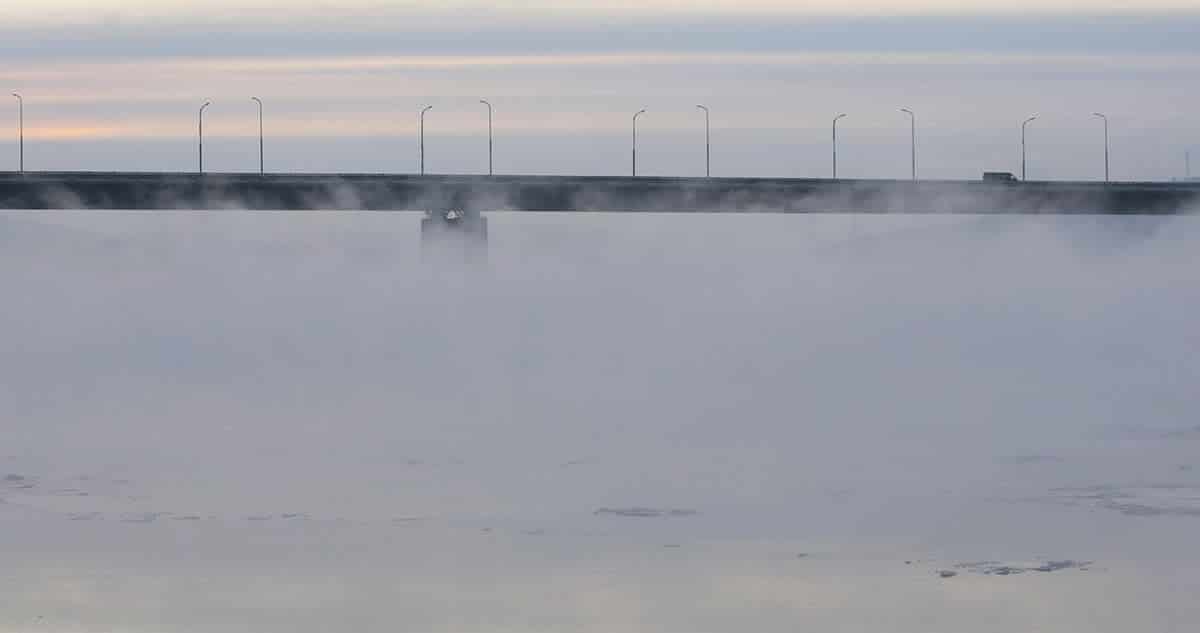
Imagen final a través de Oleg Khadartsev y Aleksandr Alekseev. Todas las demás imágenes son de Marcel Weber.
Artículos relacionados:
Fotografiando el remoto y nevado mundo de los barcos pesqueros de Alaska
Los fantasmas de la fábrica de hilo abandonada de Croacia
Documentar los bordes de la URSS
